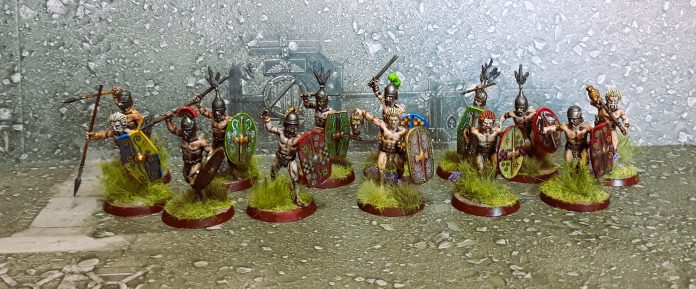Did you know that the cheapest way to do historical reenactments is by choosing Iron Age Gauls? All you need is a sword, a shield and some golden torques. For some reason few people do this, despite the fact that skyclad is the way to go when the sun’s out, provided you use sunscreen on sensitive areas. Gauls had a notorious reputation as barbarians and ruffians living on the fringes of civilization, and going pants optional certainly didn’t help in dispelling this notion.
As with most things handed down through our collective memory this isn’t really true. It depends on who wins the battles and writes the memoires. If you’re a Roman, it’s easy to dismiss everything that doesn’t bask in the glory of the eternal city to call an entire people a bunch of yokels living in the woods. But “Celtic” is also a very broad term. If you look at territories inhabited by these peoples throughout history, the territories these stretch from Spain to the Alps to way up north and into the Balkans. Celtic, and by extension Gallic society, remains elusive because everything we see is filtered by Greek and Roman minds, who certainly weren’t in the objectivity camp. There is no literature remaining, and researching these peoples is true archeology (desecrating graves and such). The fact is that Gaul was in general a prosperous amalgamation of tribes, with large urban centers, a stratified society with kings, and classes of warriors, merchants and working class heroes plowing the fields.

This immediately raises the question: what is the difference between Gauls and Celts? Can I use these kits together? The short answer is yes. The difference is a bit semantic, but the Gauls were a Celtic people. History is once more beholden to the Romans, as the Gauls were simply Celts that settled in what Romans called Gallia. So while they had a broad shared cultural background and language tree, this doesn’t mean that they got along all the time or didn’t conquer each other. But it’s fairly difficult to find records of this and accurately portray the battles and tactics used. It’s absolutely amazing how druidic practices have survived* though, for some reason supersecret knowledge preserved easier and you can put on a white robe and recreate those rituals.
*Editor note (Lenoon here) – lots of druidic practices date from the 19th century, largely through noted teller of tall tales and one of history’s greatest bullshitters, Iolo Morganwg
As the territories were contested and conquered by Rome, Gallic customs and clothing filtered back to it. You’d have rebellious youths sporting mustaches, beards and wearing pants, disgraceful to the civilized man of the polis. But apart from this, the Gallic proficiency at fighting and war (if they weren’t bickering amongst themselves) was one of the main exports. Gallic mercenaries travelled all over the roman empire fighting with or against the legions. When they trekked to the Balkans, Greek hoplites learned to fear them. This flexibility makes them an ideal historicals project, as you can slot these guys into almost any ancients project and get away with it. Victrix made some kits in 28mm for these mustachioed weirdos, and we’ll look at three today: the Gallic naked fanatics, unarmoured Gallic warriors, and the Celtic chariot kit.
How’s your head
Let’s keep it decent with our first kit and look at the Unarmored Warriors. Your £33/€39,95 will land you with 44 warriors and 4 command options, a hefty bag that will take care of a unit or two if you’re into mass battle games. For Saga age of Hannibal (dealer’s choice), this will be enough for 6 points, albeit a rather straightforward one. You’ll be able to make 3 or 4 groups of 8 warriors, and 2 or 3 groups of hearthguard, with 4 miniatures left over for a little leader diorama. I did have a mild criticism about the Greek mercenary and Athenian hoplite sprues; just enough heads on the sprue to finish the models, but no spares. You’ll have a ton of bits over when you’ve finished this one! They’re also fully interchangeable with other kits reviewed here, so you can really go wild with making these truly unique. For weapons you get swords, spears and javelins, and, again in contrast to our friends the hoplites, some extra shields. These are really nice to add to a base, or use as markers (Fatigue markers for Saga for example) to note game effects.

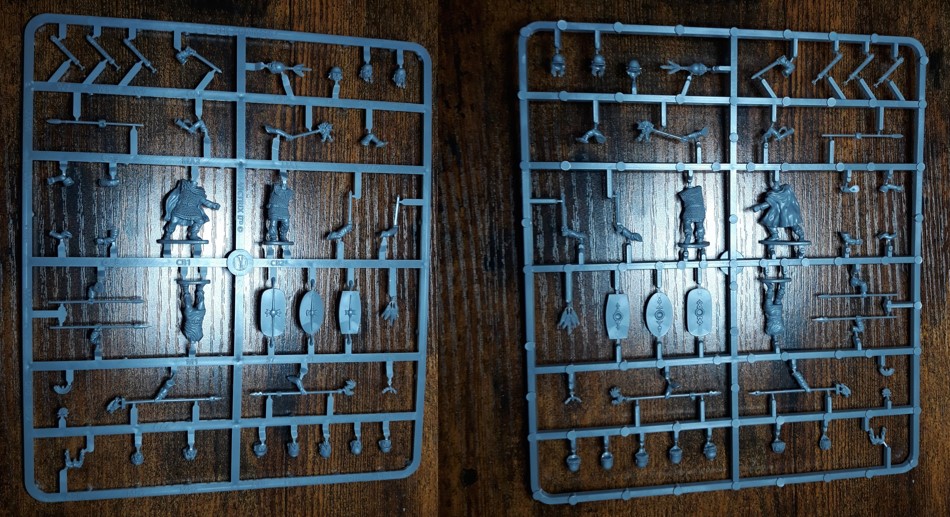
Every warrior can be equipped with a sword and should have one at least in the scabbard on their belt. Swords were a status symbol among the Gallic tribes, and any warrior worth their salt wouldn’t want to be seen with a lousy woodman’s axe. The swords were so good in fact, the Romans stole adapted the ones used by the Celtiberians, which evolved further into the literally classic gladius used in later times. So put a sword on every model, to show your opponent you have badass warriors.

To further scare the hell out of their opponents, these brave people tootled to battle with the typical long-necked Carnyx, a bronze trumpet with a shaped end resembling a boar or other nasty creature. These were (probably) used as standards and rallying points, much like a flag, except more annoying when you’re right next to it. Since they’re so iconic, it’s hard not to use them and if you play Saga there’s nothing stopping you from making a leader base with two of these guys trumpeting away. A nice addition are the capes, which can make it easy to mark elite models, and they’re fully compatible with the greek models, as reported by a mate who I gifted a sprue. The next kit is also fully compatible with Greek kitbashes.
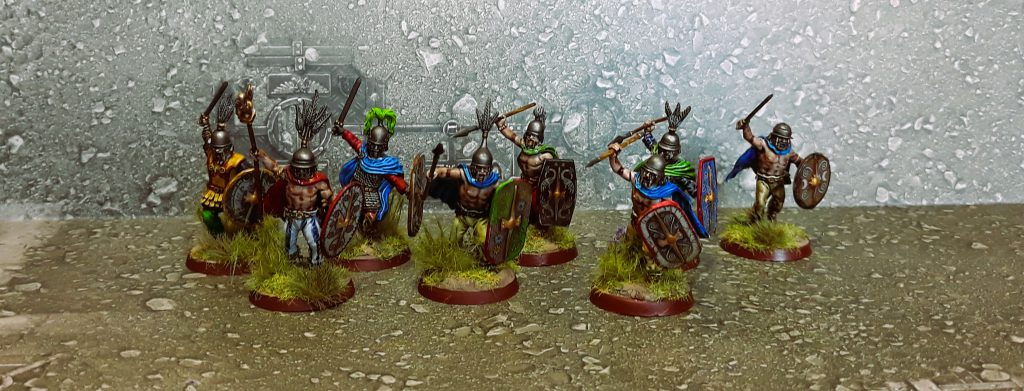
No complaints
We’re into speculation land again, and the question that inevitably rises is; did they actually fight buck naked? Well yes, not all of them of course, but it was a thing. And a brave thing indeed. It’s not like all Gallic tribes fought in balmy mediterranean climes either, and if you imagine feeling miserable after wearing the wrong coat on a rainy day and coming home drenched from the rain, think of standing for hours in sleet and hail until battle is met, but naked. Showing that you can withstand hardship, and having confidence in your abilities with spear, sword and shield to forego any other armor once again proves how highly these people venerated warrior culture. At this point you would expect some sort of joke or double entendre about genitals, and here it is; there are also plenty of bits on these sprues. You can build 24 warriors, but for obvious reasons capes are not provided here (though you still can use one from other kits if you want). Clad only with a sword belt and some jewellery (not as enticing as it sounds on a screaming Gaul) you can use spears and javelins next to the aforementioned swords. A nice touch is that you get a couple of sets of hands clutching javelins as well in their left hand, not enough to equip an entire band, but it’s a nice attention to detail. Nobody carries just one javelin. There are a couple more unhelmeted heads, all modelled with spiky hair, to simulate the lye and pig’s fat they used in the first ever punk look. You can optionally paint them with the famous blue tattoos, but again, customs between different tribes differed a lot so if you don’t feel like freehanding just add a little sunburn or something.
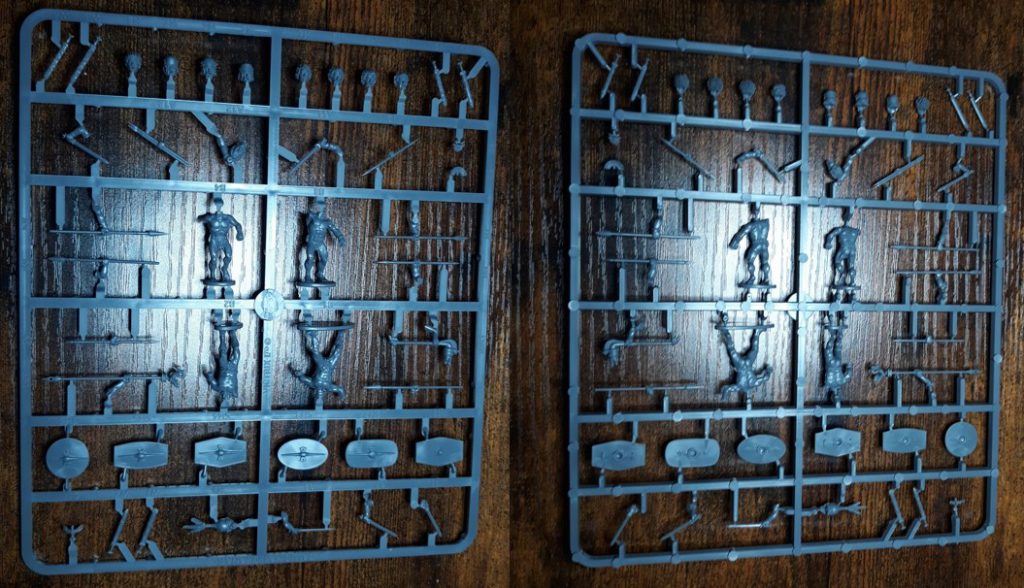
In this bag as well as the chariot kit, (can’t say box) There are several severed heads to adorn your models with. This is a particularly grizzly thing, which may have been exaggerated over the years, but does have a firm footing in historical reality. Some tribes more than others were ferocious headhunters in battle. In Gallic culture the head was the most important body part, containing the soul and essence of someone, and in the case of a man, semen, source of life. Claiming a head meant total domination and these trophies were revered as treasure. I’m falling into repetition here, but don’t let the pastoral ideal of farming villagers and thriving merchants in cities cloud the fact that warriors were king here, and being brave and fearless was one of the things every Gaul aspired to. We’re forced to paint with broad strokes here, but contrast this to roman nobility: with a greater emphasis on ancestor worship it was all about outclassing your ancestors. Conquer even more, attain an even higher office in politics, strive to outdo your grandpappy in every way. Tenacious, sure, but not in a bloody-minded way like the Gauls. The point of this little derail is that it’s perfectly fine to adorn your warriors and chariots with severed heads if you want to.
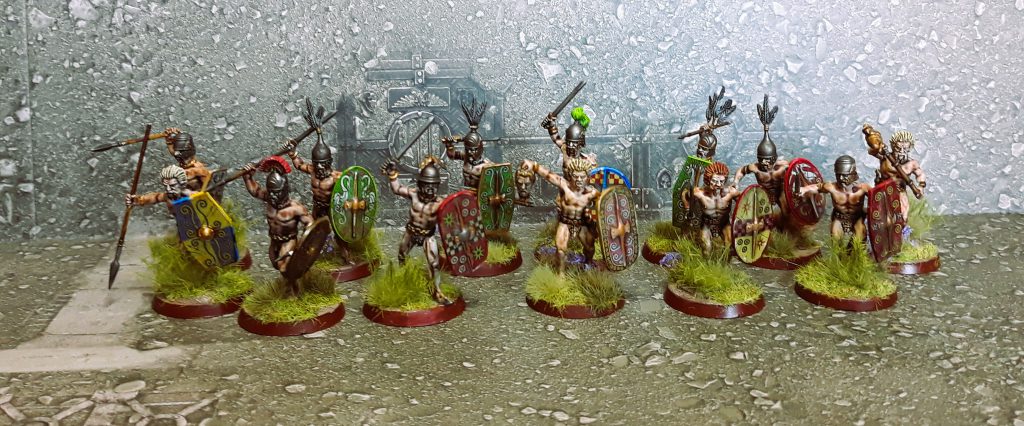
Chariots are fire
I saved the best for last, because the chariot kit is amazing and the whole reason I started this project. The typical Victrix bag is filled to the brim with three, count them, THREE chariots for the price of £34/€39,95. I’ll start with the sprue pics first:
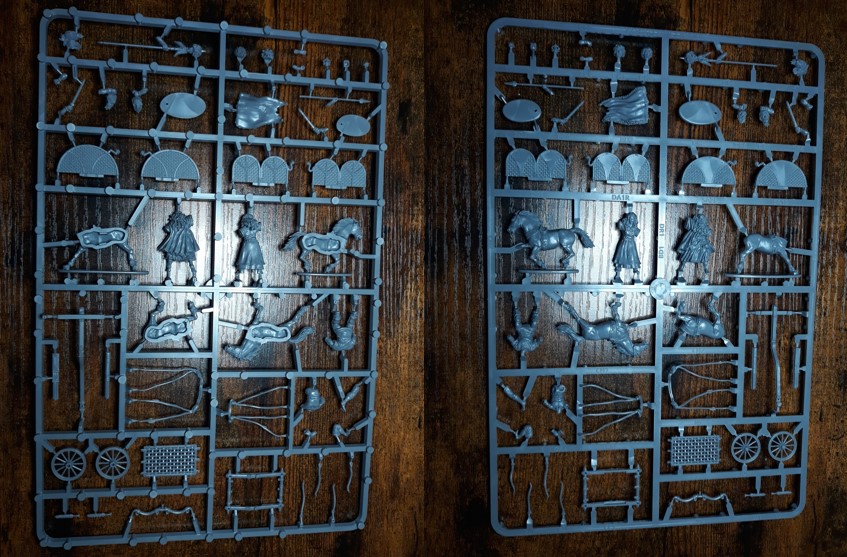
Pretty good right? You get 3 sets of these, all containing the druid and female warrior. There are also two options for the chariot driver. You can of course add these to the rest of your warband, but as chariots were used a bit like armored troop transports today, it may be a good idea to model dismounted versions. While the exact tactics used are of course mostly lost to the sands of time, contemporary texts indicate that they were mostly used for transport. Next to that the sight of these things rumbling enmasse towards the enemy had a psychological effect that can’t be underestimated. A modern(ish) equivalent would be a dragoon or humvee with a machine gun attached. You don’t want to crash into the lines with chariots, as using two wheeled carts over broken ground usually ends badly. But they did give a great amount of mobility to the warriors that used them. You can and should add some chariot units, as they were one of the defining cultural symbols as well. There are some beautiful examples which were found in Chieftain’s graves, which were probably used as ceremonial carriages. The two-wheeled examples faded out of use after time, but you can get away with pitting them against Late Republican Romans.

The assembled kits are great. Poses are dramatic but realistic, and there is a certain presence when these are put on the tabletop. More than two thousand years after crushing armies beneath their wheels, they still have an effect. It’s like a Carthaginian player plonking down a couple of elephants. The build is a bit fiddly, make sure you test fit everything, but the instructions are clear and I absolutely love these models. There are two different side panels in the set, so you can mix it up a bit. And there are little bases included on the sprue if you want to adapt any leftover models. You could technically magnetize the models to dismount troops and use one of the spare warriors as infantry, but that seems more trouble than it’s worth to be honest.
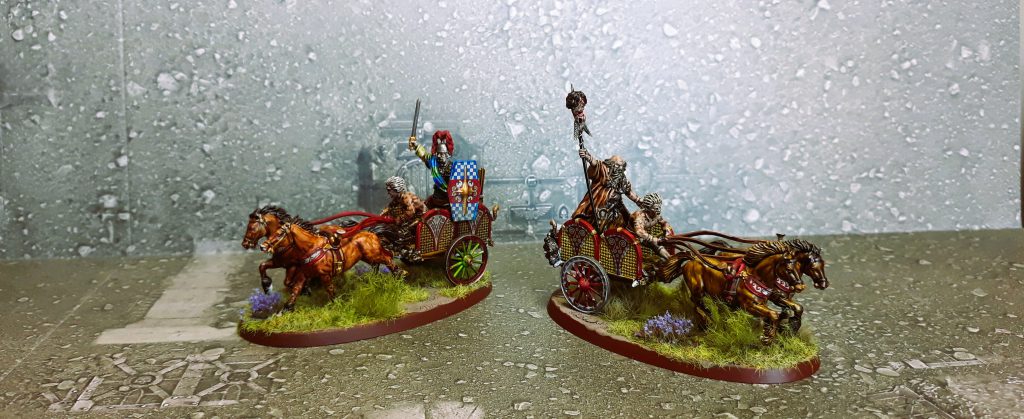
Hard truths about Victrix Kits
There is little in these kits that’s to criticize. Spears can be tricky? There’s always a rather thick “base” that’s hard to cut away so the models are standing on a little hillock? These are things that can be said of most plastic sets on the markets so it’s something inherent to the plastic process I guess. But as mentioned, they outshine the greek sprues in bits and ways to differentiate your models. It helps that the general look of this sort of army is more ragtag, and won’t be as uniform with the options presented. This makes them a nice painting project as well. I’ve used contrasts, shades and highlights as per usual and it works just fine for an individually minded army while still using a limited palette to tie it together. This palette doesn’t have to be limited to subdued colors, as bold and striking is the look you want. I would recommend getting the Little Big Men transfers Victrix sells on their site, unless you really like doing some freehand designs.
If you’re looking at smaller games a bag or two will set you straight, as there are no skirmish packs available yet. But with the combination of versatility, price point and sculpts, you won’t regret having a couple more models. And if you want to play an army that’s earned its reputation in battle, and has influenced the classical world with its weapons, armor and invention of pants and mustaches (citation needed) this range is an excellent place to start.
You can order these kits (and more) as well as transfers directly from Victrix here.
Questions, Comments, Suggestions? Proud Brythonic warrior out to redress the historic crimes of the Rhufeinig? Get in touch via contact@goonhammer.com or leave a comment below in the name of Vercingetorix!
